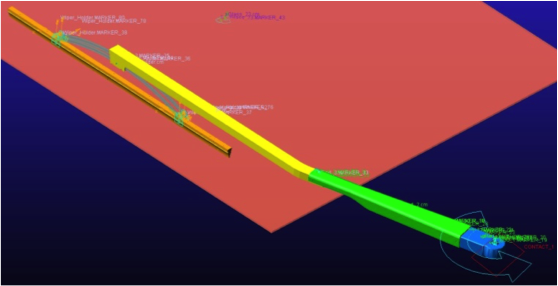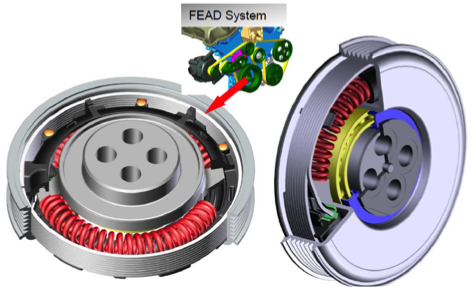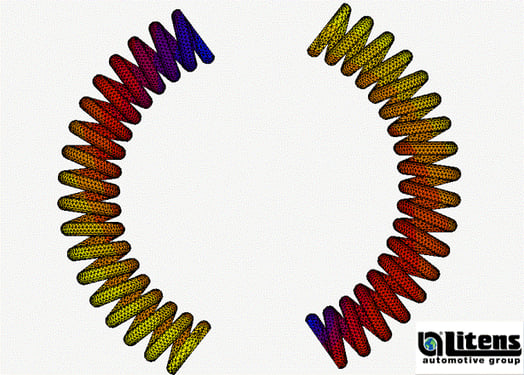In the last simulation blog the benefits of flexible body dynamics simulation were introduced.
The method used to represent a component flexibly requires an FEA solution that captures the vibration characteristics (normal modes) and the connectivity stiffness between the interface points (constraint modes). These are all linear modes used to represent any state of a component by a linear superposition sum. But what if your component doesn’t behave linearly?
What if it is a rubber bushing with different stiffness in tension, shear and compression? Superposition of linear modes is no longer an accurate representation.
MSC Software have a solution for this using co-simulation between their Adams motion package and their Marc non-linear FEA package. Co-simulation is a technique where two different solvers run independently but pass information between them at each time step. The classic example is fluid/structure co-simulation where CFD and FEA solvers run in step with the CFD solver passing pressure loads to the FEA solver which in turn passes information on the deflection of structural components which affect the flow. The Adams/Marc solution exchanges positional and force information between the two solvers at defined locations.
Two examples where this technology has improved the fidelity of a simulation model are illustrated below:
Windscreen Wiper
The interaction between the rubber blade and the glass is a very complex non-linear relationship. Marc was used to model this and pass torque and force data back to Adams which was used to simulate the mechanism.

Torque Modulator
You can model a non-linear spring in Adams using a force/displacement relationship, but in this example it would not be so easy to come up with the curves. In this instance the client had modelled the whole system in Marc previously, but moving to a model where Marc simulated the springs and Adams the rest of the assembly gave a 15X speed up for the whole simulation with comparable results.

This novel use of co-simulation offers both improved fidelity to the systems engineer when modelling inherently non-linear systems leading to more accurate prediction of behaviour as well as reduced runtime to non-linear FEA analysts who can use Adams to model the linear and approximately rigid components in a system to greatly reduce their runtime.

Both of these products are available within MSC’s flexible token licensing system, known as MSC.One. The Start Edition offers access to Marc and Adams as well as MSC’s flagship FEA solver Nastran starting from prices as little as 1/3rd the cost of comparable high end FEA solutions.
.png?width=139&height=70&name=DTE-Logo%20(4).png)
